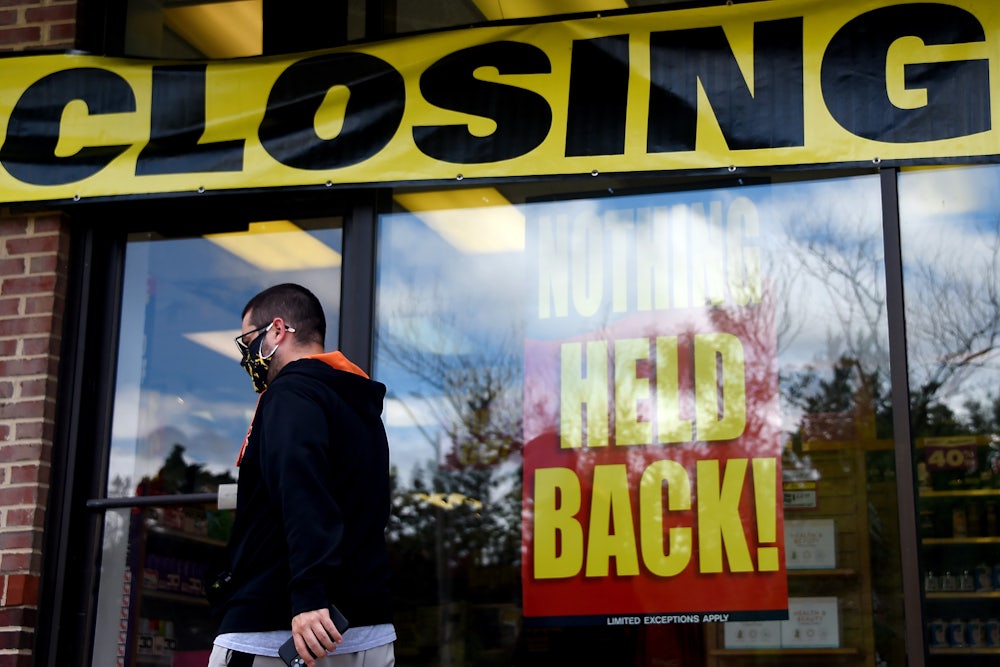Back in March, or many lifetimes ago, Congress passed the Cares Act, which included a provision to send out one-time direct payments to people making less than $99,000 a year. This week, a team of university economists with the National Bureau of Economic Research, or NBER, published a working paper on how they spent it. According to the NBER, 15 percent of the polled stimulus recipients said that they had spent, or planned to spend, the entirety of the funds; 33 percent responded that they put the money into savings; and 52 percent said they used the money to pay off debts.
The $1,200 checks went out in full to people making up to $75,000 if they were eligible for the program. (Undocumented immigrants were locked out of the stimulus, as one example.) That amount was reduced by $5 for every $100 an individual made above that threshold, ultimately capping at people earning $99,000. The income gradations here were meaningful: Researchers found that lower-income households were “significantly more likely to spend their stimulus checks,” and the same went for households facing “liquidity constraints.”
In essence, people who went into the pandemic with very little didn’t need the stimulus checks to become responsible consumers again; they needed them to live. Others saved or paid down debts. But the idea behind the checks was to stimulate, right? That as the pandemic stalled economic activity, the one-time issuance of funds was meant to go into the pockets of working- and middle-class people so that they could then turn around and spend the money at local and national businesses. But that’s a lot of responsibility to put on someone ordering to-go from Applebee’s.
The missing piece in this equation was clear from the start: With the economy effectively shut down, state and local governments would suffer massive budget shortfalls without immediate intervention by the federal government, which, unlike those governments, has the power to literally print money and take on debt. (Many states have constitutions or state laws that explicitly prohibit their legislatures from passing an imbalanced budget.)
As David Dayen pointed out for The American Prospect in July, the $150 billion in Cares Act funding earmarked for tribal and state governments was designated to only be spent on coronavirus-related efforts, prompting many cash-strapped states to prematurely lift pandemic restrictions. “While most developed countries waited until their average case counts were quite low before letting people back into the world, states were pressured into salvaging their economies and bringing in some semblance of revenue by throwing open the doors,” Dayen wrote. This backfired horrendously. Not only were significantly fewer people spending money than before, but cities and towns, deprived of crucial tax dollars that keep public services up and running, were also soon up their neck in positive cases.
The federal government still has yet to correct this oversight, so the situation remains dire. Without the federal government’s assistance, many localities will soon be forced to slash their budgets, focusing most of their cuts on vital public services. (State and city leadership have a choice in how they distribute this kind of economic pain but routinely opt to leave their police budgets untouched as they cut or defund more crucial programs.) In New Orleans, the library system’s funding is reportedly set to be cut in half come 2021. New York City is likely going to lay off close to 22,000 city government employees. (Meanwhile, calls to equitably tax the rich continue to be stiff-armed by Governor Andrew Cuomo, who’s refocused his efforts on inking a book deal.) The NBER report took time to address the local government underfunding issue in its conclusion, noting that one of the available and potentially necessary strategies will be for Congress to repeat the actions undertaken by the American Recovery and Reinvestment Act of 2009 in which the federal government transferred cash to local and state governments to help them avoid “cutting the services that they provide in the midst of crisis.”
The only discernible explanation for why America is destined for its second major economic stall-out in 12 years is the same one that could be used for the 2008 financial crisis: federal incompetence and outright apathy. Being a worker in America means constantly balancing on a tightrope above economic doom, just waiting for a gust to send you into the abyss. Entering the pandemic, millions of Americans were already teetering. Student debt was a massive, trillion-dollar weight pressing against the chests of tens of millions of people. Rising rental and homeownership costs were fueling housing insecurity. Medical bankruptcy was so common that a cottage industry of crowdsourcing companies quickly became just another normal part of life. The ability to simply be had already been whittled down after years of austerity politics and stagnant wages bled workers dry; the coronavirus simply served as the last swing of the ax. Is it any wonder that the stimulus money failed to stimulate anything?
